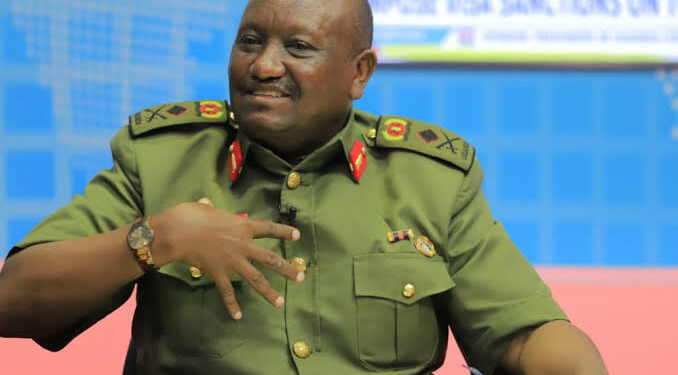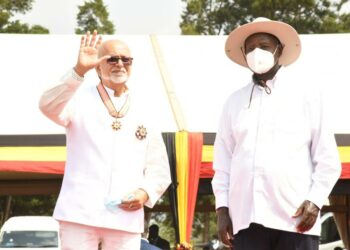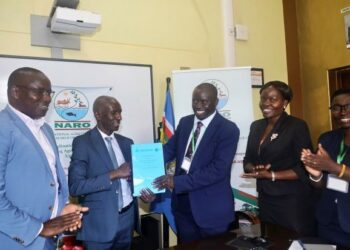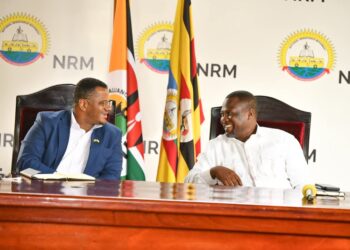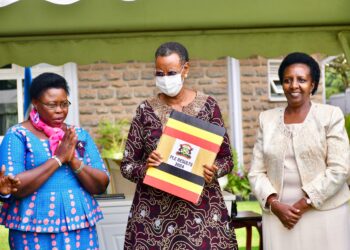The Uganda People’s Defense Force (UPDF) has revealed that the Tarehe Sita celebrations are being held in Greater Mbarara in order to recognize the role that was played by the Front for National Salvation (FRONASA) in the liberation of Uganda.
Through the army spokesperson’s Twitter handle, UPDF noted that the sacrifices made by the founders of the People’s Revolution will always be remembered.
“The UPDF is celebrating its Army Week in greater Mbarara in recognition of the sacrifices made by the Founders of the People’s Revolution. We are indebted to the FRONASA liberators,” UPDF said..
Tarehe Sita marks the day National Resistance Army (NRA) rebels launched an attack on Kabamba barracks as part of their military campaign against the Milton Obote-led government on February 6th, 1981 which later ushered in the leadership of the ruling National Resistance Movement (NRM) government.
Every year, Tarehe Sita celebrations are carried out every year and the army selects regions where the army carries out various civil-military cooperation activities such as building and renovating public schools and hospitals intended to recognize, thank and give back as a token of appreciation to the people of Uganda.
This year, the celebrations are in greater Mbarara which is made up of; Mbarara city, Mbarara district, Isingiro, Rwampara, Ibanda, Kazo and Kiruhura districts and currently a lot of activities are going on in above mentioned districts.
Among the selected projects which are being worked on by the UPDF include; the construction of; the outpatient Department Ward of Mbarara district Bwizibwera Health Center IV. Two classes from Rutooma Integrated primary school to replace the dilapidated three-classroom block, (these have been built in memory of the late Sam Magara who died in the struggle).
FRONASA was a rebel group led by Yoweri Museveni (Current President of Uganda.) It started as a group of militant left-leaning intellectuals led by Yoweri Museveni. Its founding members mostly were ex-followers of then President Milton Obote who had fallen out with him. Its membership belonged to the Banyankole and Banyarwanda peoples.
In 1971 the same year it started sounding, it split up when Obote was overthrown during the coup d’état, resulting in Idi Amin’s assumption of the Ugandan Presidency since some decided to cooperate with Amin, while others Museveni inclusive went into exile to organize a militant resistance
In early 1973, Museveni officially announced the formation of the “Front for National Salvation” and published a manifesto targeting Amin, titled “An Indictment of a Primitive Fascist”.
At this point, FRONASA had about 200 members and at the same time, another FRONASA camp near Busoga in was discovered and destroyed by the Uganda Army. FRONASA underground operations were dismantled, and nine members of the group were executed by a firing squad.
Museveni who strongly opposed Amin’s regime, and some of his small group of comrades decided to team up with Obote’s faction despite their previous disagreements.
FRONASA, along with other militant groups such as Kikosi Maalum (led by Milton Obote), formed the Uganda National Liberation Front (UNLF) and its military wing the Uganda National Liberation Army (UNLA) in 1979 to fight alongside Tanzanian forces against Idi Amin.
When the UNLF assumed full control of the country, Milton Obote gradually outmanoeuvred Museveni and his followers. He sidelined the latter in politics, allowed just 4,000 FRONASA fighters to join the new Ugandan army and had them split up among numerous units, and finally forced the rest of Museveni’s private army to disarm.
What remained of FRONASA later became the core of the Popular Resistance Army (and later the National Resistance Army) when Museveni launched a rebellion against Obote’s new government in 1981.
Do you have a story in your community or an opinion to share with us: Email us at editorial@watchdoguganda.com


